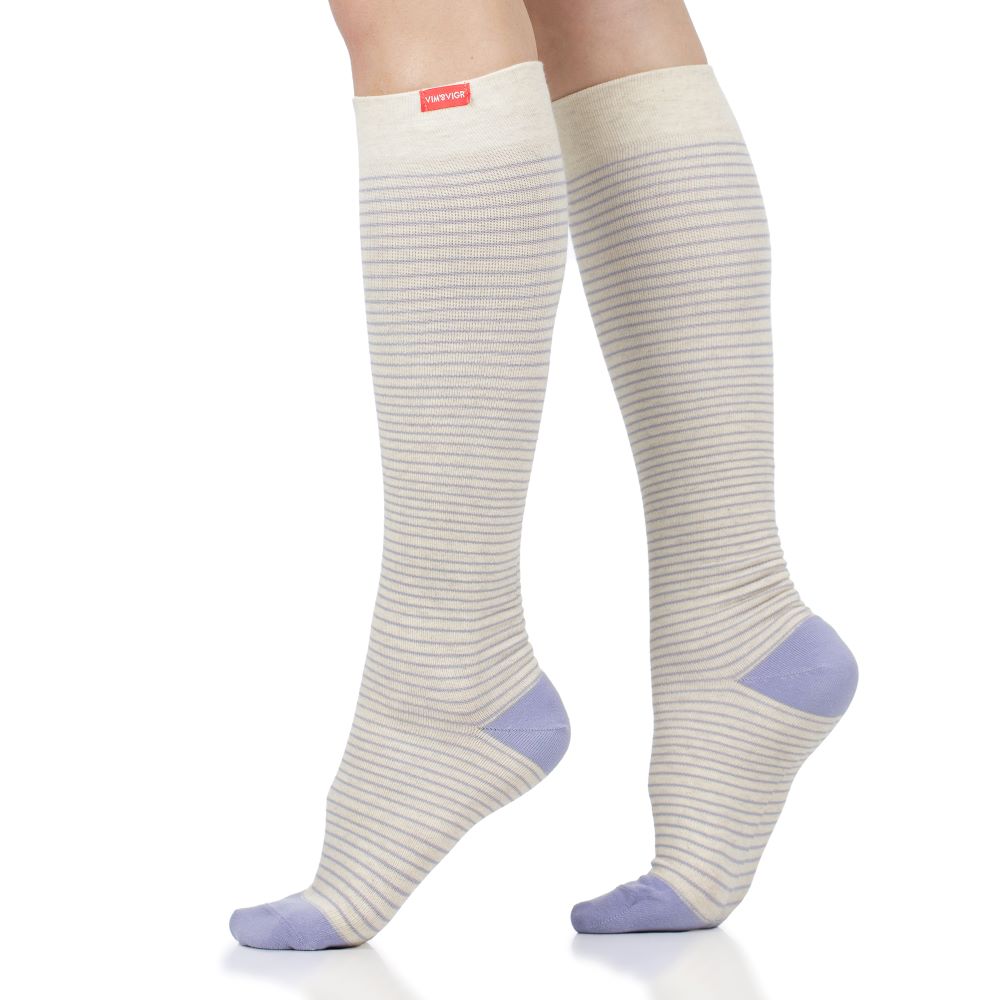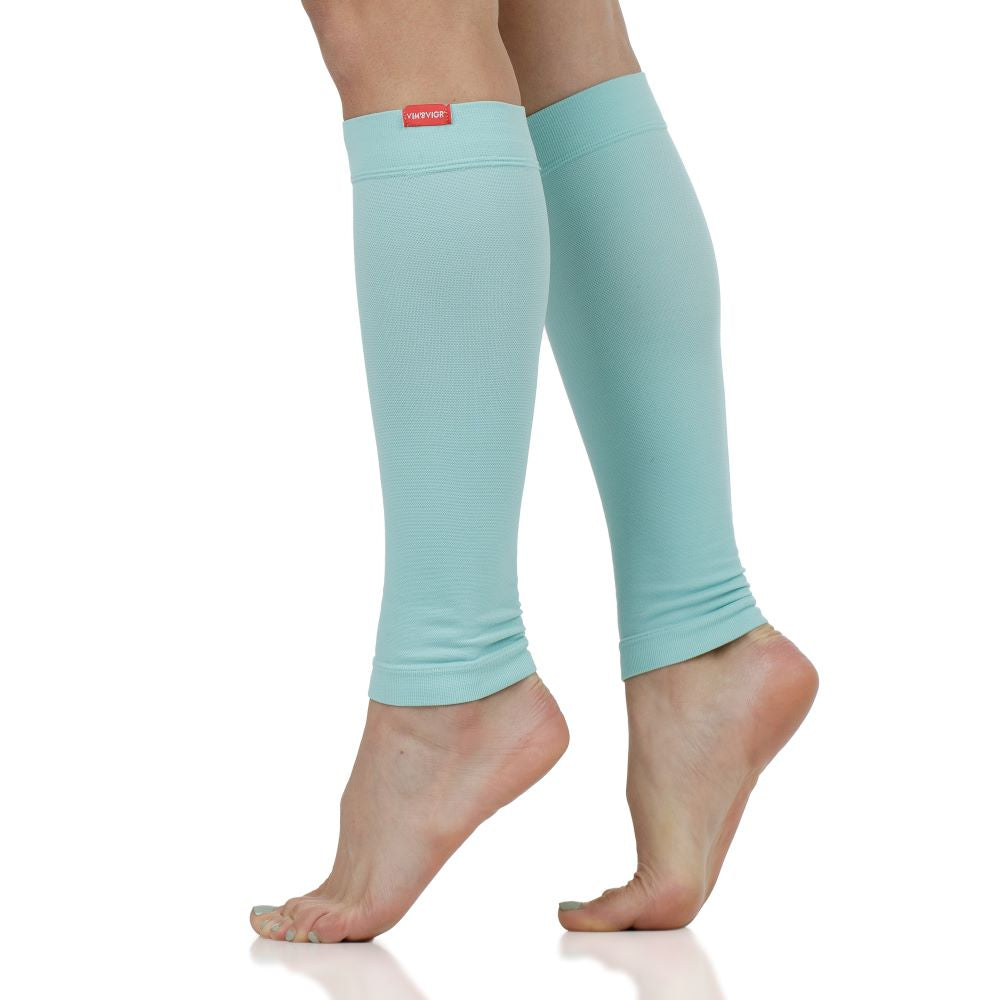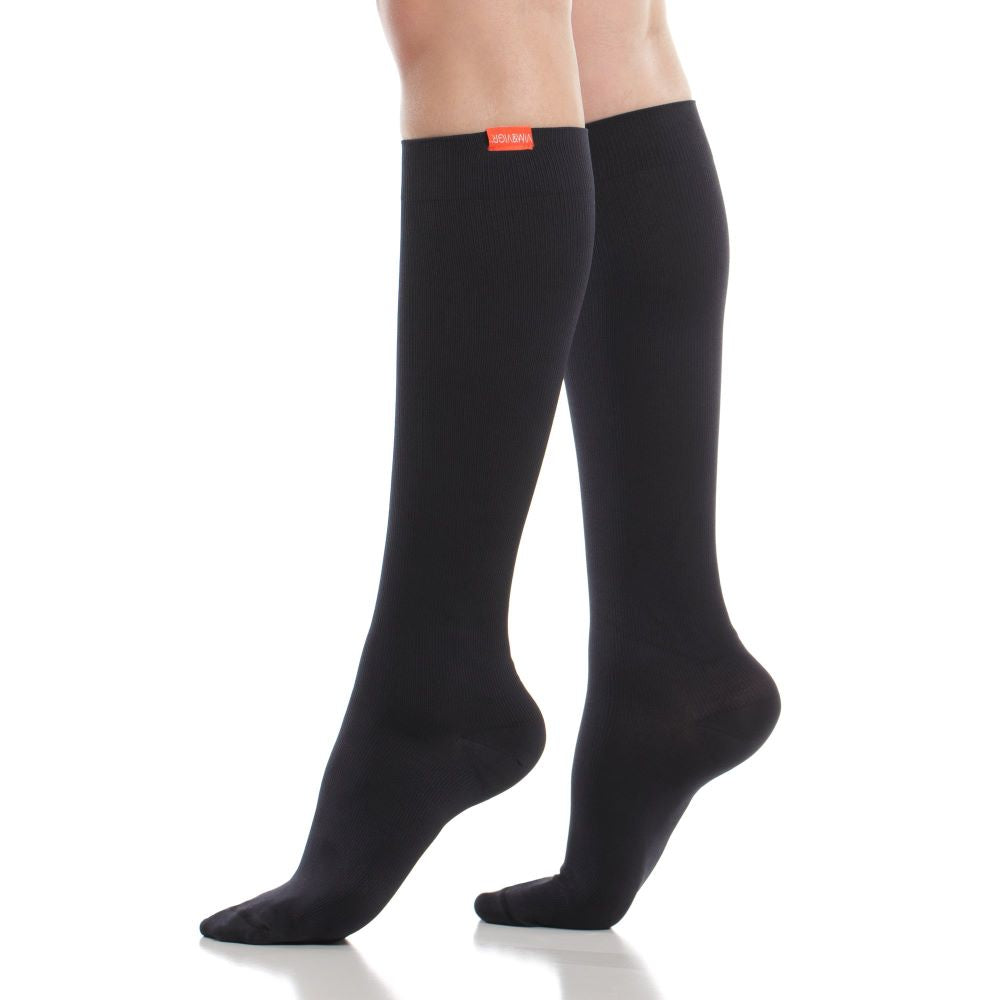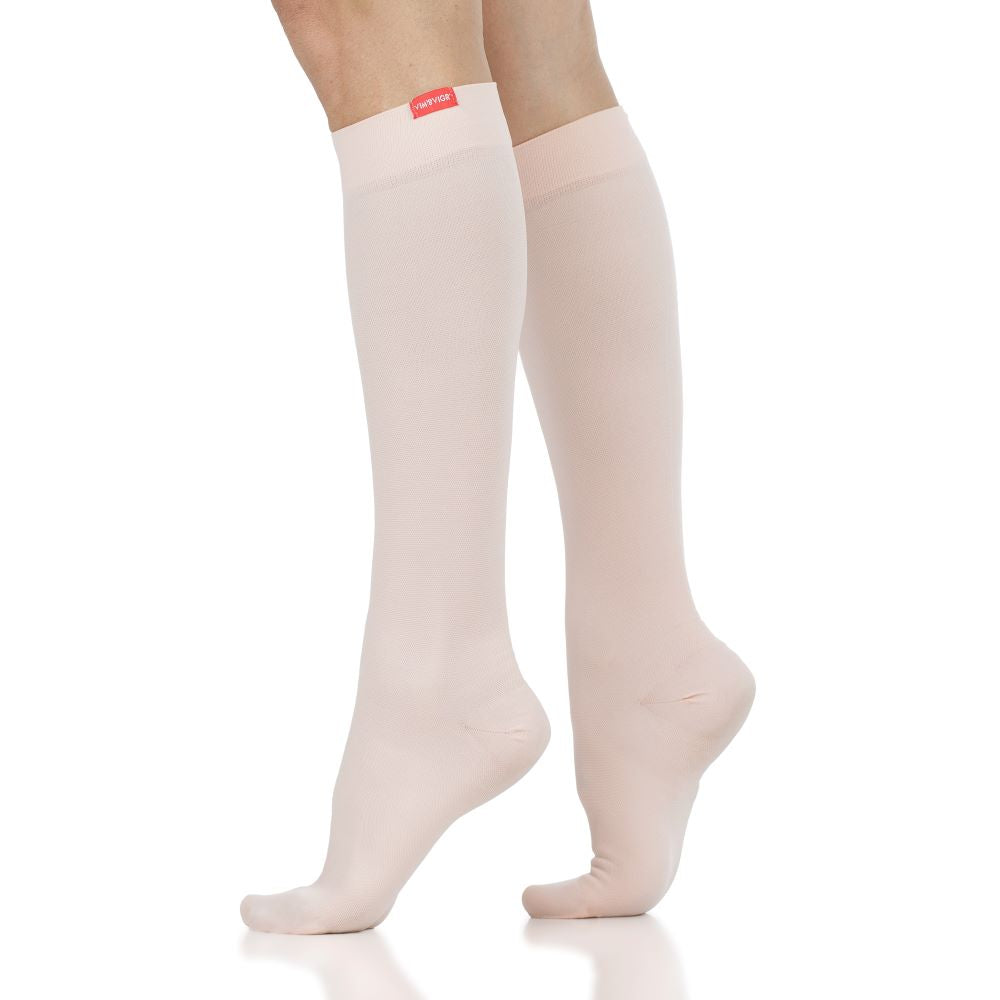Hiking Compression Socks: The Benefits & How to Wear Them
Like any activity which involves spending a long time on your feet, hiking can lead to swollen, tired legs and ankles. But, thanks to compression socks designed specifically for hiking, from materials like merino wool which is recognized for its moisture wicking properties and comfort in the outdoors, you can avoid this and move around wherever you wish to go.
What are hiking compression socks and why should you wear them for a day out in the mountains? These socks are designed to relieve tension and aches and pains acquired after spending a long time outdoors on your feet, while being perfect recovery companions or even very comfortable to wear as you hike.
What are hiking compression socks?
Compression socks, firstly, are garments that use graduated pressure applied to your lower legs and feet, so that your blood flow is stimulated and overall circulation is improved. Graduated compression means that the socks are tightest at the ankle, reducing as you go up to the knee. These types of socks are very helpful for people who are on their feet all day or for those sitting without movement for a long period of time, and can help with conditions such as neuropathy, edema and varicose veins.
For hiking and outdoor activities in general, compression socks have been developed that not only benefit your blood flow, but also work well in the outdoor environment. So, when you read about compression socks for hiking, they will most likely be a combination of the graduated compression material and moisture wicking fabrics that allow your feet to breathe, stay dry in the warmth and get dry quicker if you get them wet, and feel good when you’re walking a lot on a long hike.
Most “serious” hikers will look for socks that they can walk in for a whole day, or for recovery socks to put on after their hike. Hiking compression socks for recovery will usually be warm and snuggly, so that you can enjoy your well-earned rest around the campfire.
Read on to find out:
- What hiking compression socks are and why they are helpful;
- The benefits of wearing compression socks when hiking;
- Choosing your recovery compression socks on the trail;
- How and when to wear them;
- Our recommendations of the best hiking compression socks.

Why use hiking compression socks?
When you spend time in the hills walking and standing, your legs understandably become fatigued. Blood circulation will be focused on the lower part of your legs, which can lead to swelling and discomfort. Additionally, depending on the weather, heat can also have a negative effect on how your lower limbs feel.
On top of this, when you’re hiking or walking long distances, your choice of footwear is extremely important. Hiking boots are designed to protect your feet from the rocks, roots, and various other hazards, while also supporting your ankles. Pair them with good hiking socks to keep moisture out, prevent blisters and ensure the comfort of your feet throughout the day.
If you combine these two strands of thought, it becomes obvious that hiking compression socks can be a great accessory. Through the gentle pressure applied on your legs, these socks prevent blood from pooling around your ankles and leading to edema, pain, or discomfort. They also protect your lower limbs from trail hazards like thistles, rocks, and branches that can scrape you.
Finally, there are no conclusive studies on the post-hike benefits, but runners and endurance athletes have been using compression garments for recovery and many professionals swear by them. During a hike, the gentle compression can postpone fatigue and relieve some muscle stress. After a hike, compression can help delay the onset of DOMS (delayed onset muscle soreness).
As long as your hiking compression socks are designed specifically for outdoor activity, combining the benefits of compression with effects you’d look for on the trails (such as quick drying and moisture wicking, blister prevention, and overall comfort for long periods of time and through changing weather conditions), you will enjoy many hours of happy hiking in them and keep your energy going for another day!
Compression socks for recovery on the trail

Another popular use of compression socks in general is for recovery from exercise. Runners swear by them during and after their workouts. Here’s why compression socks are great for recovery on the trail:
- They increase the amount of oxygen circulating in the lower limbs, promoting healing for muscles and tendons quicker – even during the hike;
- They reduce the time it takes to recover from exercise, thus helping you go on another hike or go through multi-day events and adventures feeling fresher and stronger;
- The gentle pressure from a pair of graduated compression socks helps prevent a build-up of fluid in the lower limbs, preventing them from swelling after a long day’s hike. Less swollen feet will feel and fit better in your hiking boots the following day, lowering your risk of chafing or developing blisters.
Finally, the added warmth from a comfortable pair of merino wool hiking socks can be a great bonus on cold nights in the mountains, especially after you’ve cooled down from a vigorous hike.
How to wear compression socks for hiking
To make the most of your hiking compression socks, we recommend ensuring that they are paired up with sturdy, good-quality footwear adapted to the hike you’re planning. Moreover, you’ll need to consider other factors such as the weather and the length of time you’ll be wearing the socks for, as well as if you need several pairs for a multi-day hike, different pairs for hiking vs recovery, etc.
Here's an easy guide on how to wear compression socks for hiking:
- Start with planning you trip, before you take clothing into consideration. Make sure you’re clear on the distance and elevation gain you’re facing, the type of terrain you’ll encounter, and how far you’ll be from towns or cities;
- Consider where you’ll sleep, too – whether in a tent out on the trail or in shelters or cities, this will make a difference to your packing plan;
- Once all these details are clear, you have two choices to make regarding hiking compression socks:
- If you choose to wear your compression socks while hiking, make sure they are warm enough / light enough (depending on the temperatures outside), that they fit you correctly and won’t roll down from under your knee, and that they feel comfortable when paired with your hiking boots. It could be a good idea to wear fast-drying, breathable socks made from merino wool regardless of the season. They tend to allow your feet to stay dryer and blister-free, while adapting to the temperature to keep you from getting too hot or too cold;
- If you also want a recovery pair of socks, you can opt for a higher degree of compression to help your calf muscles recover better and for some added gentle pressure on your Achilles tendons, to help them relax after a lot of climbing. Nylon or merino wool work equally well, and it will feel great to put on a fresh pair of socks after you’ve set up your tent or unpacked your rucksack in a hotel or shelter at the end of the day. Wear them overnight to get the most benefit and you’ll wake up with lighter, less sore lower limbs the next morning.
- Depending on how long you’re going for, having at least one spare pair of hiking compression socks makes sense to keep you cleaner and dryer or to have a plan B in case your feet get soaked – accidents happen! Of course, ideally, you should have one pair for every day you hike in your compression socks, to avoid build-up of dirt and bacteria (leading to bad smells, but also possibly to more opportunities to form blisters through rubbing against foreign materials inside your socks).
If your socks fit well and are the right type for your feet and shoes, then you can wear them continuously without the need to change or watch the clock. But we do advise that you switch from your walking pair to your recovery pair at the end of the day, to stay dry and clean and to feel that extra treat.
The best hiking compression socks
To ensure you have the best experience with your compression socks for hiking, here are a few things to look out for when you purchase a pair:
- Level of compression. Going lighter will be better for those just starting out and looking to wear their socks all day.
- Sizing. You will need to make sure that the socks fit tight enough not to roll down your calves when walking. Calf circumference is usually helpful in determining the best size of compression socks for you.
- Material. As we’ve mentioned, merino wool socks are ideal for their quick-drying, breathable properties and they will adapt to the temperature very well. Nylon is also quite lightweight, breathable and quick-drying as an alternative.
- Warmth and wicking properties. These are essential as we’ve mentioned, depending on the temperatures you’re face as well as how much you might sweat.
- Style. Yes, this should also be something to look at! There are lots of options to browse through to ensure you look your best on the trail, whether you go for colorful patterns or more subdued styles.
Once you purchase your hiking compression socks, it is a good idea to not take them out on their first big hike right away. To make sure they fit right and to give yourself the chance to get used to them, take them on shorter walks once or twice. This is also a great idea for your hiking boots, actually. Once the socks have gone through a wash, too, you’ll be able to double check the fit and the comfort levels.
Remember that compression socks in general will start by feeling quite tight, but you will soon get used to that. If they do feel uncomfortably tight, then you should look for alternative sizes, however.
Compression socks for hiking: Staying comfortable on the trails
Wearing hiking compression socks that feel good and look great when you’re out walking even shorter distances will yield multiple benefits. Just like runners or those who work standing up for long periods of time, hikers can enjoy the muscle soothing benefits from compression garments, as well as how these socks prevent swelling and painful ankles. Moreover, good-quality merino wool socks will keep you warm and dry in all types of weather. They wick the sweat away and they ensure your feet smell fresh, which is not to be sniffed at (pun intended!) when you’re out on the trails for a few days straight.
If you have any health concerns, medical conditions or any doubts about wearing compression socks for hiking, you should first check with your doctor before starting to use them regularly. However, with a relatively lighter pressure level, almost anyone can enjoy a pair of compression socks that make you feel lighter and fresher for longer. Browse our range and choose the style that best suits you, starting with the lighter pressure 15-20 mmHg at first and then changing as and when you feel the need to.


















Leave a comment